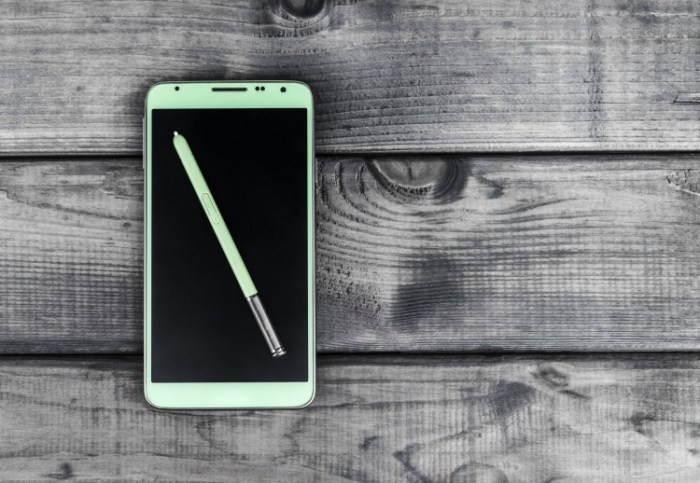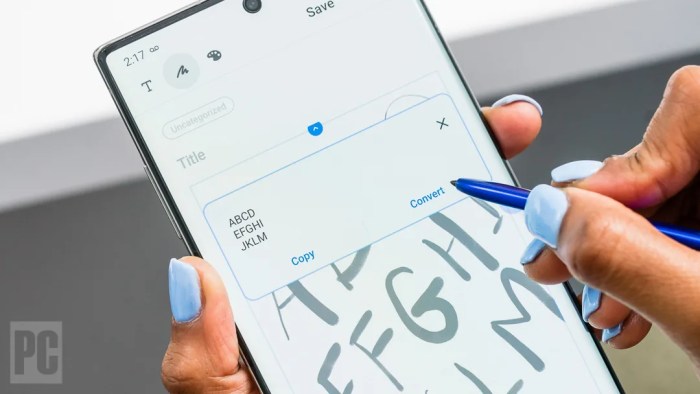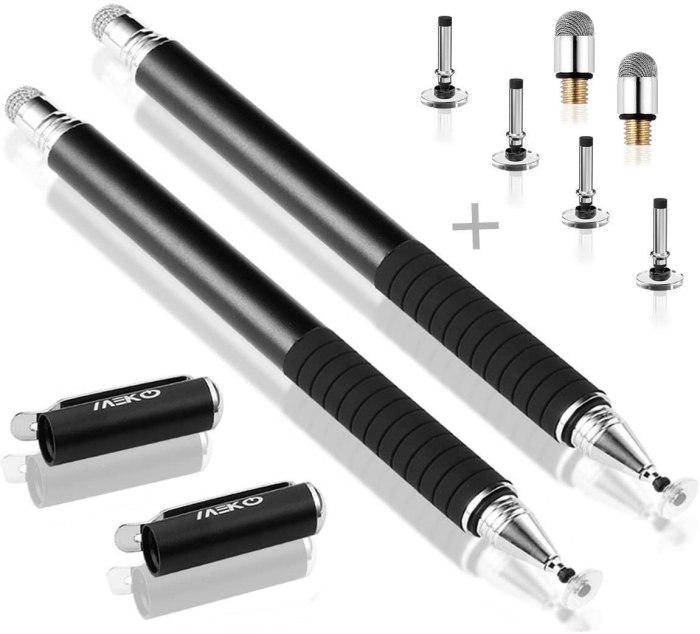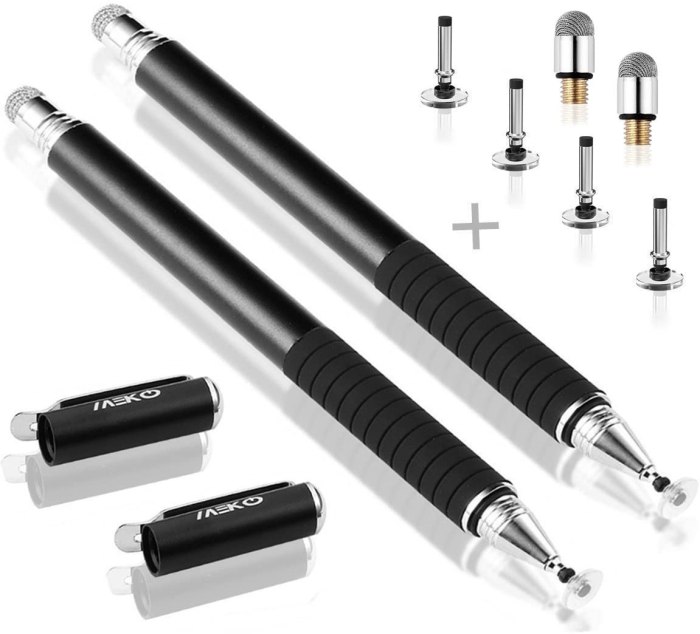Which phone has the best handwriting recognition with stylus? This question resonates deeply with users seeking seamless digital note-taking and sketching experiences. The market offers a diverse range of smartphones boasting stylus capabilities, each with varying levels of accuracy, speed, and software integration. This exploration delves into the nuances of stylus technology, software features, and user experiences to help you navigate this landscape and identify the ideal device for your needs.
We will examine top smartphone models, comparing their screen technologies, stylus types, and handwriting recognition algorithms. The impact of factors such as pressure sensitivity, palm rejection, and display resolution on the overall user experience will be thoroughly analyzed. Furthermore, we’ll consider software features, user reviews, and future trends in this evolving technology to provide a comprehensive overview of the best options available.
Software Features Enhancing Handwriting Recognition

Handwriting recognition on smartphones has evolved significantly, moving beyond basic character recognition to encompass sophisticated features that improve accuracy and user experience. These advancements are driven by increasingly powerful processors, improved algorithms, and the integration of handwriting recognition with other core smartphone functionalities. The features discussed below highlight the key advancements in this area.
Modern handwriting recognition software employs a combination of techniques to translate handwritten input into digital text. These techniques include sophisticated character recognition algorithms, context-aware word prediction, and robust language support. The integration of these features within note-taking apps, email clients, and other applications further enhances productivity and usability.
Remember to click top mobile games with best streaming quality to understand more comprehensive aspects of the top mobile games with best streaming quality topic.
Character Recognition Algorithms
The core of any handwriting recognition system is its character recognition algorithm. These algorithms analyze the shapes and strokes of handwritten characters, comparing them to a vast database of known characters to determine the most likely match. High-end smartphones often use proprietary algorithms, optimized for speed and accuracy, which may incorporate neural networks or machine learning techniques for continuous improvement. For instance, Samsung’s S Pen technology likely utilizes a deep learning-based approach, constantly refining its recognition capabilities based on user input. Apple’s Pencil technology, on the other hand, may leverage a combination of algorithms including Hidden Markov Models (HMMs) and neural networks. These advanced algorithms allow for greater accuracy even with varied handwriting styles and pressures.
Word Prediction and Contextual Awareness
Beyond simple character recognition, advanced handwriting recognition software incorporates word prediction and contextual awareness. Word prediction suggests words based on the characters already written, significantly speeding up the writing process. Contextual awareness goes further, predicting words based on the surrounding text and the overall context of the writing. This feature is particularly useful for correcting common spelling mistakes or suggesting appropriate words based on the ongoing sentence structure. For example, if a user writes “th,” the software might predict “the,” “their,” or “them,” depending on the context. This context-awareness is a crucial feature that separates basic character recognition from advanced handwriting input systems.
Language Support and Multilingual Capabilities
Modern smartphones often support handwriting recognition in multiple languages. This multilingual support allows users to write in their native language or any other language supported by the device’s software. The extent of language support varies among manufacturers and models; some may offer support for dozens of languages, while others might focus on a smaller selection. The quality of recognition can also vary across languages, with some languages being more accurately recognized than others, depending on the complexity of the script and the availability of training data for the algorithm.
Integration with Other Applications
The effectiveness of handwriting recognition is significantly enhanced by its integration with other applications. Seamless integration with note-taking apps allows users to take handwritten notes directly into the application, which can then be searched, edited, and organized. Similar integration with email clients allows users to compose emails by hand, bypassing the need for a physical keyboard. Other applications, such as calendar apps and task managers, can also benefit from handwriting input, making it a versatile tool for a range of tasks. This level of integration makes handwriting recognition a powerful productivity tool.
Comparison of Handwriting Recognition Algorithms
| Manufacturer | Algorithm (if known) | Description |
|---|---|---|
| Apple | Proprietary | Likely incorporates a combination of HMMs and neural networks for character and word recognition, known for accuracy and speed. |
| Samsung | Proprietary | Deep learning-based approach, constantly improving through user input, emphasizing speed and accuracy, particularly with the S Pen. |
| TensorFlow Lite (likely) | Utilizes Google’s machine learning framework for character recognition, known for its adaptability and cross-platform capabilities. |
Integration with Note-Taking and Drawing Applications

Seamless integration between handwriting recognition and note-taking/drawing apps is crucial for a positive user experience. The ability to effortlessly convert handwritten notes into digital text and seamlessly incorporate drawings within the same workflow significantly enhances productivity and creativity. This integration goes beyond simple text conversion; it involves intelligent features that understand context and improve the overall note-taking process.
The effectiveness of handwriting recognition is greatly amplified when combined with the features of dedicated note-taking and drawing applications. These apps often offer advanced features beyond basic text transcription, such as shape recognition, object detection, and intelligent organization tools that work in tandem with the stylus and handwriting recognition capabilities of the device. This synergistic relationship creates a powerful tool for both students and professionals.
Popular Note-Taking and Drawing Applications with Superior Integration, Which phone has the best handwriting recognition with stylus
Many popular applications offer excellent integration with stylus-enabled devices and handwriting recognition. Examples include OneNote, Notability, and GoodNotes. These apps often provide features such as palm rejection, pressure sensitivity support, and various pen and highlighter options to mimic the feel of traditional pen and paper. Furthermore, they often include organization tools like tagging, searching, and indexing handwritten notes, converting them into easily searchable digital content. The integration is typically so smooth that the transition between handwriting, drawing, and text editing feels natural and intuitive.
Features Enhancing Note-Taking and Drawing Experiences
Beyond basic handwriting recognition, several features significantly enhance the note-taking and drawing experience. Shape recognition, for instance, automatically converts freehand drawings into geometrically perfect shapes, ensuring neatness and clarity. Object detection can identify handwritten equations, diagrams, or even specific objects within drawings, allowing for easier organization and later retrieval. These advanced features elevate the note-taking process from simple transcription to a more sophisticated, intelligent system. For example, in a physics class, a student could quickly draw a free-body diagram, and the app could automatically recognize and label the forces involved, saving time and improving accuracy. Similarly, a designer could sketch a product concept, and the app could identify and organize different components of the design for easier modification and iteration.
Future Trends in Stylus and Handwriting Recognition

The convergence of advanced sensor technology, artificial intelligence, and increasingly sophisticated algorithms is poised to revolutionize stylus and handwriting recognition. We are moving beyond simple character recognition towards a future where styluses understand context, nuance, and even the user’s individual writing style with unprecedented accuracy. This will unlock new applications and significantly improve user experience across various platforms.
The next generation of stylus technology will likely see significant improvements in pressure sensitivity, tilt detection, and even the ability to sense the subtle variations in speed and rhythm of handwriting. This level of granularity will enable more natural and expressive interactions with digital devices, blurring the lines between physical and digital writing experiences.
Improved Accuracy and Contextual Understanding
Current handwriting recognition systems often struggle with variations in handwriting styles, especially cursive writing. Future advancements will focus on leveraging machine learning to adapt to individual writing styles, learning from a user’s unique pen strokes over time to achieve higher accuracy rates. This could involve the use of deep learning models trained on massive datasets of handwritten text, incorporating stylistic nuances and contextual information to improve the interpretation of ambiguous characters or words. For example, a system could learn to differentiate between similar-looking letters based on the surrounding words and the overall context of the written sentence. Imagine a system that not only accurately transcribes your notes but also intelligently corrects minor spelling errors or suggests appropriate words based on your writing style and the context of your notes.
Enhanced Features and Multi-Modal Input
Beyond simple text transcription, future styluses will likely integrate seamlessly with other input methods. We can anticipate the development of styluses capable of recognizing gestures, sketches, and even subtle pressure variations to convey additional information. This multi-modal input could allow users to interact with applications in more intuitive and efficient ways. For instance, a user might use a stylus to quickly sketch a diagram while simultaneously dictating notes, with the system intelligently integrating both inputs into a single, coherent document. This combined approach will lead to a more natural and expressive workflow for tasks requiring both textual and visual information.
The Role of Artificial Intelligence and Machine Learning
Artificial intelligence and machine learning are central to the future of stylus and handwriting recognition. AI-powered systems can analyze vast amounts of handwriting data to identify patterns, learn individual writing styles, and adapt to different writing conditions. Machine learning algorithms can continuously improve the accuracy and efficiency of handwriting recognition, making the technology more robust and reliable. The use of deep learning, in particular, will play a crucial role in improving the accuracy of recognition, especially for complex handwriting styles and cursive scripts. This will result in systems that are not only more accurate but also more adaptable to individual users and various writing environments. Imagine a system that automatically learns your handwriting style after just a few minutes of use, offering a seamless and personalized writing experience.
Ultimately, selecting the phone with the best handwriting recognition and stylus experience depends on individual needs and preferences. While some devices excel in raw accuracy and speed, others prioritize ease of use and seamless integration with note-taking applications. This exploration has highlighted key features to consider, empowering you to make an informed decision. The evolution of stylus technology and handwriting recognition algorithms promises even more sophisticated and intuitive experiences in the future.
Top FAQs: Which Phone Has The Best Handwriting Recognition With Stylus
What is palm rejection technology?
Palm rejection technology prevents accidental input from your palm resting on the screen while using a stylus. It uses sensors and algorithms to differentiate between stylus and palm contact.
Do all stylus-enabled phones have good handwriting recognition?
No. Handwriting recognition quality varies significantly between models and operating systems. Factors like algorithm sophistication and screen technology play a crucial role.
Can I use any stylus with any phone?
No. Some phones require specific active styluses, while others support passive styluses. Check your phone’s specifications for compatibility.
How important is pressure sensitivity for handwriting?
Pressure sensitivity is crucial for achieving natural-looking handwriting. It allows for variations in line thickness and emphasis, mimicking the feel of pen on paper.

